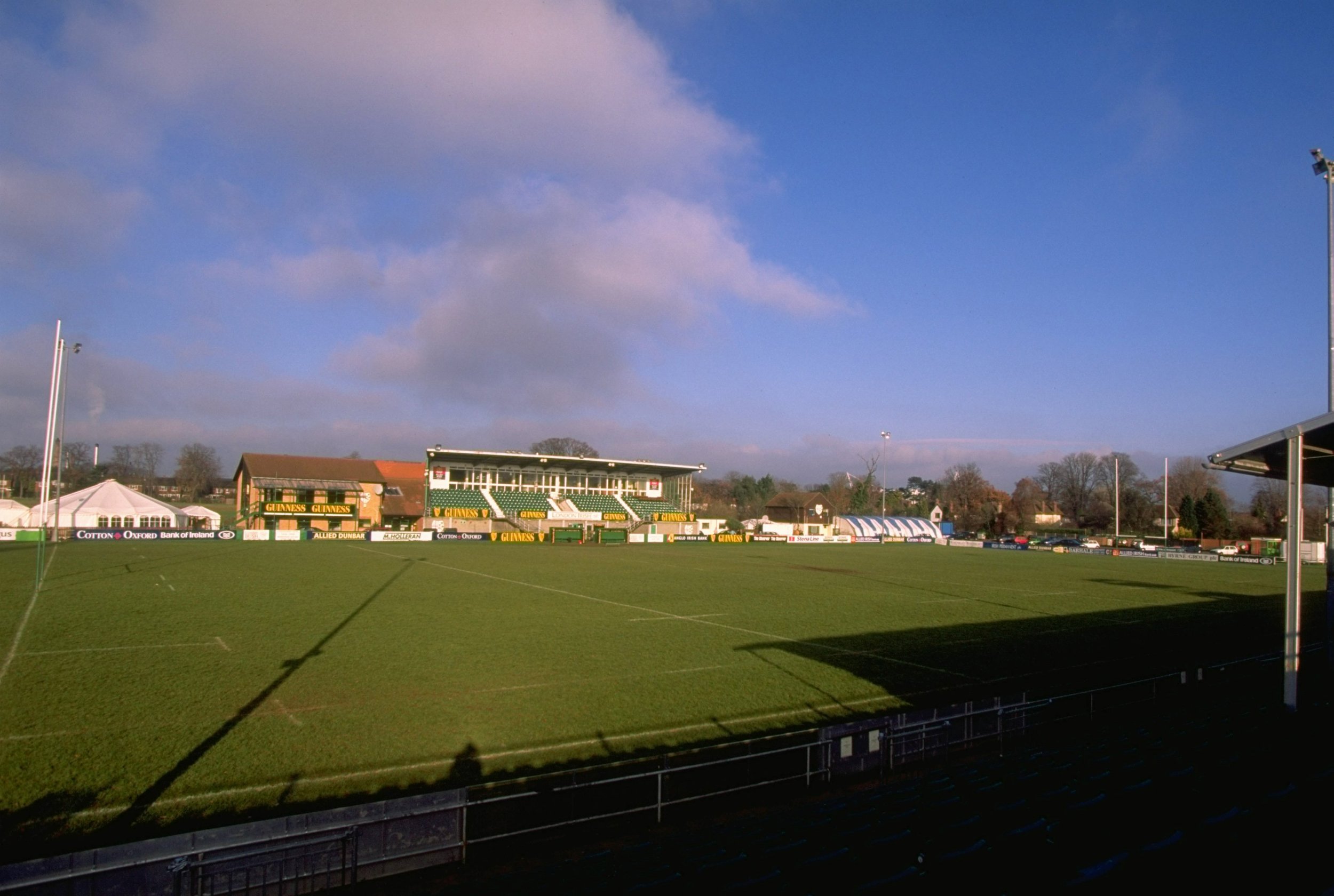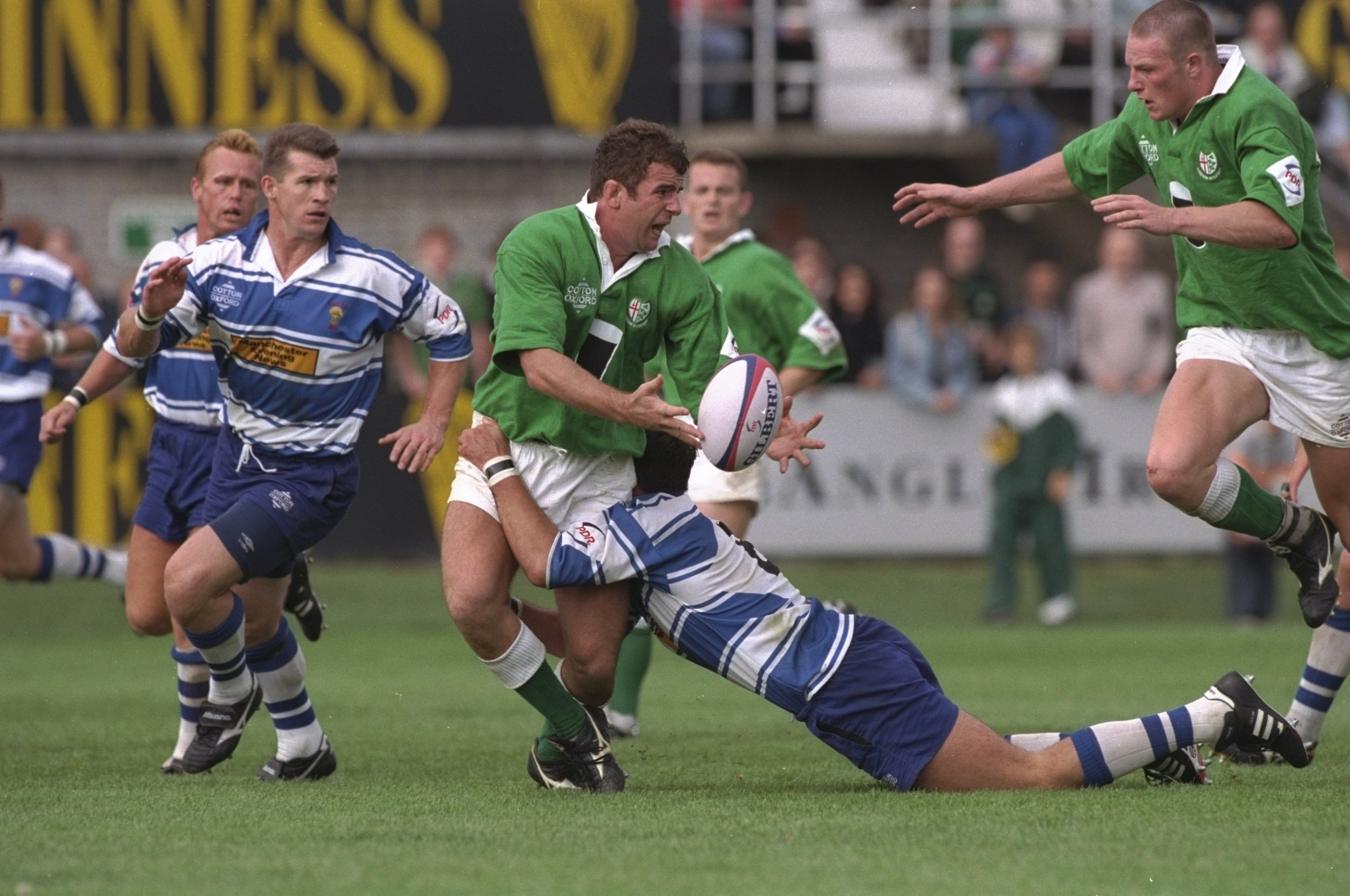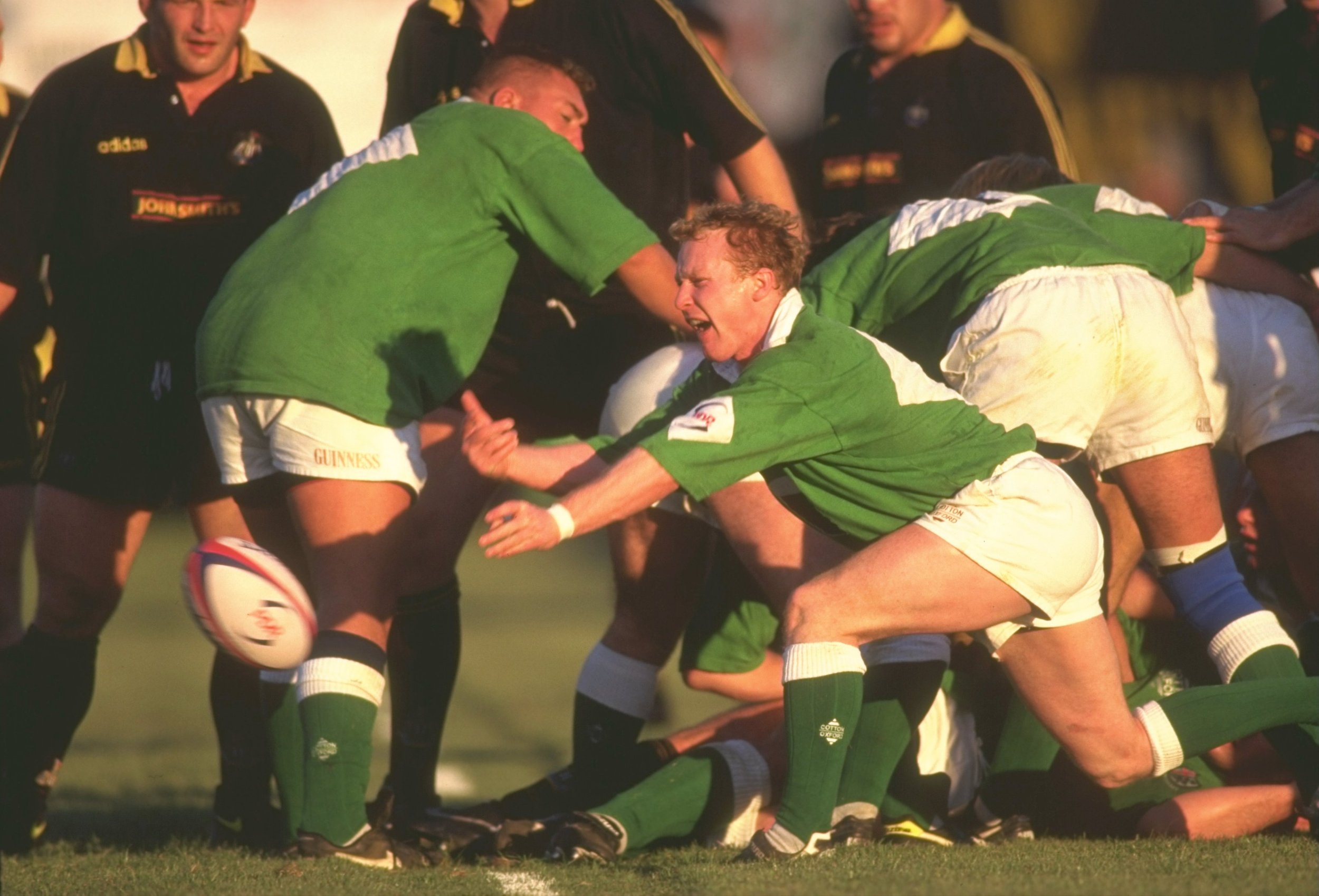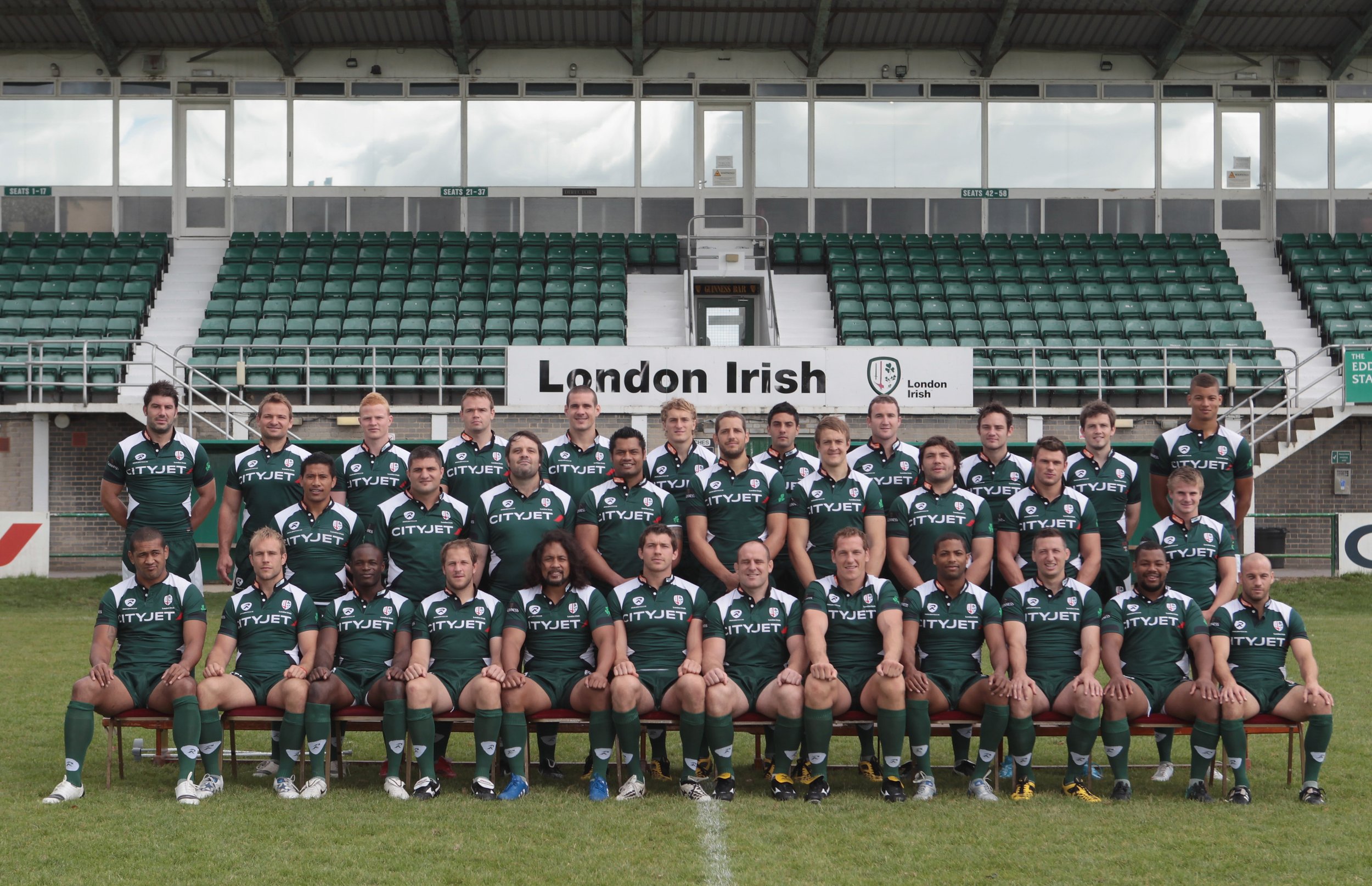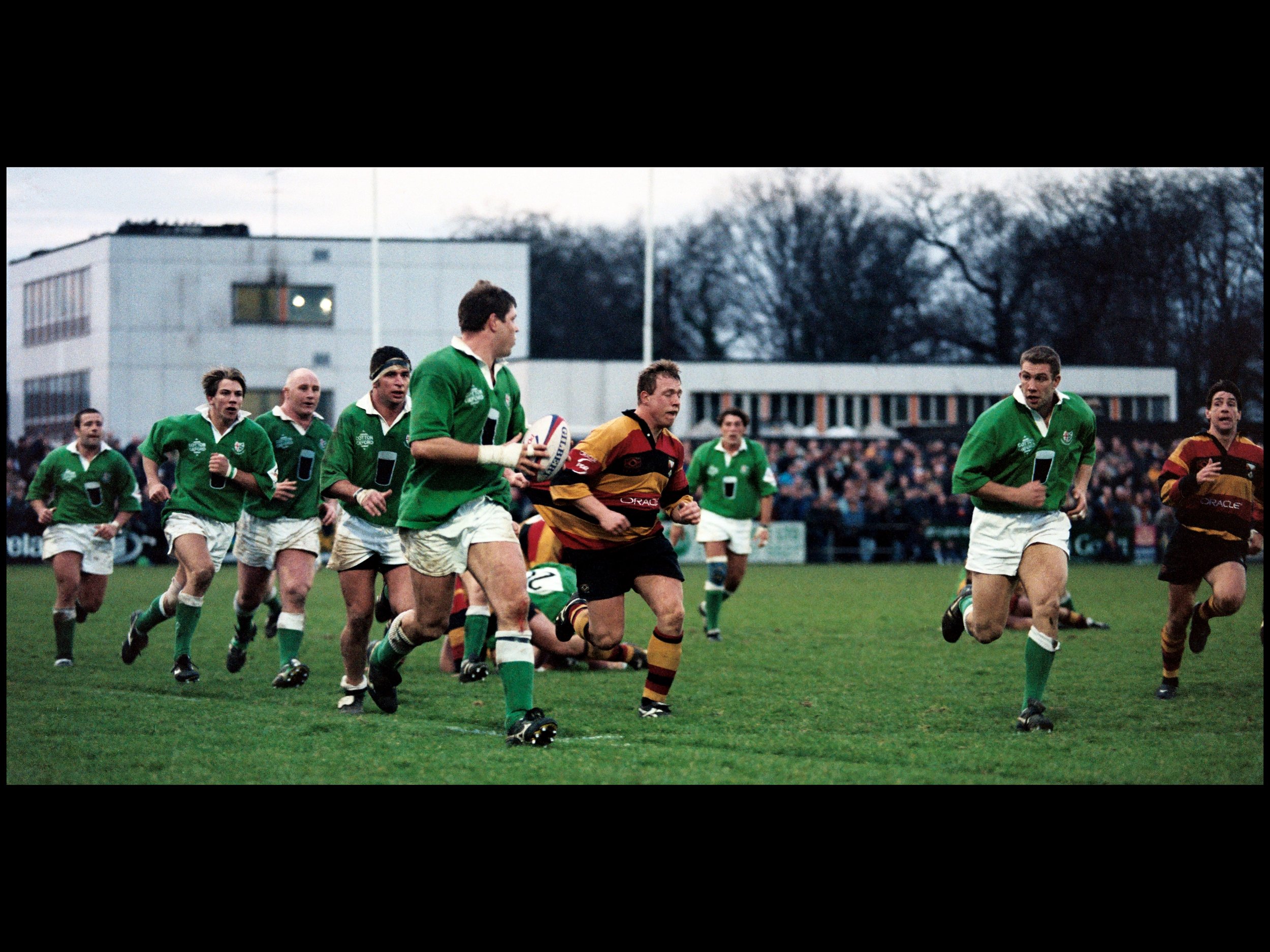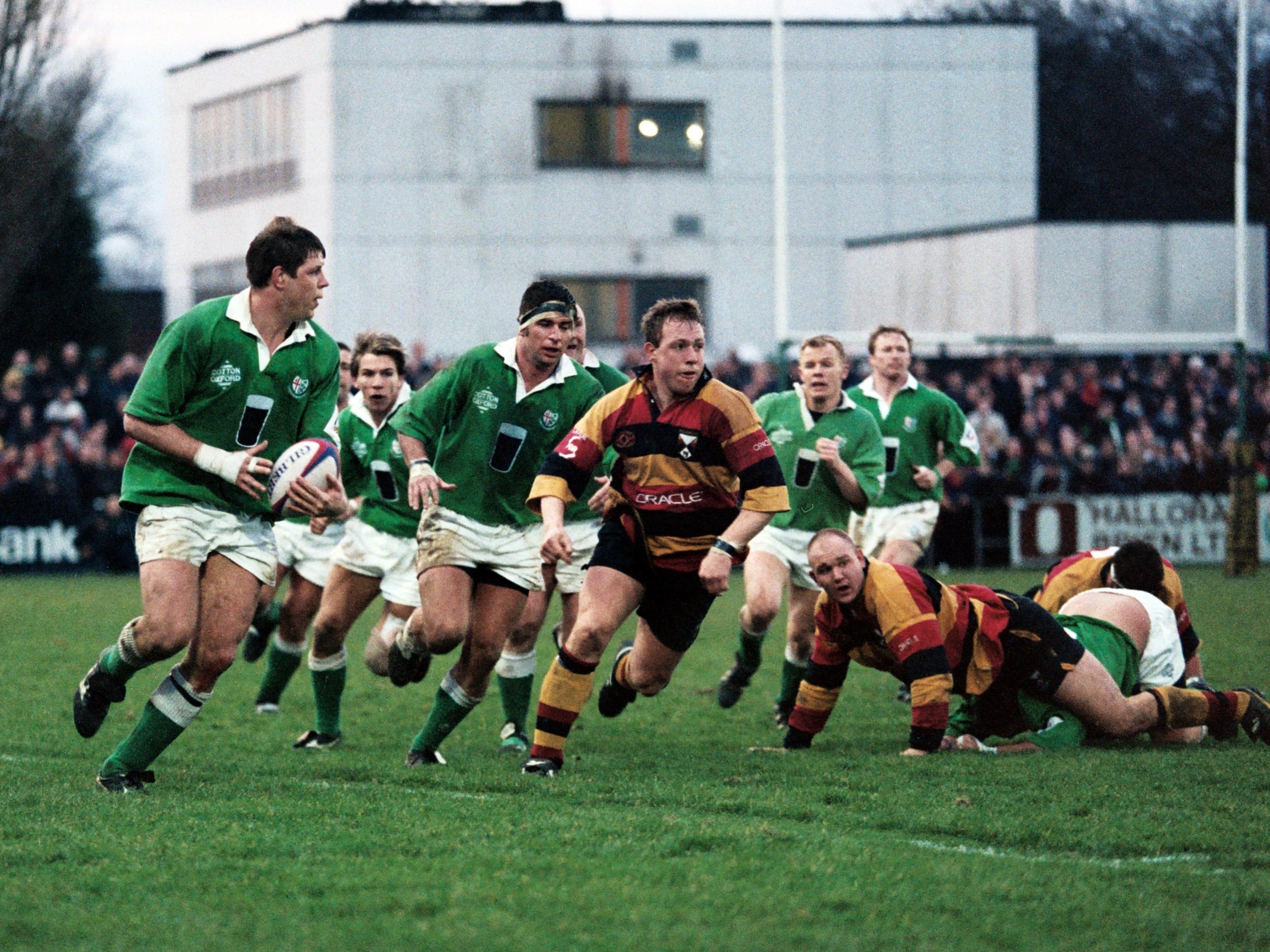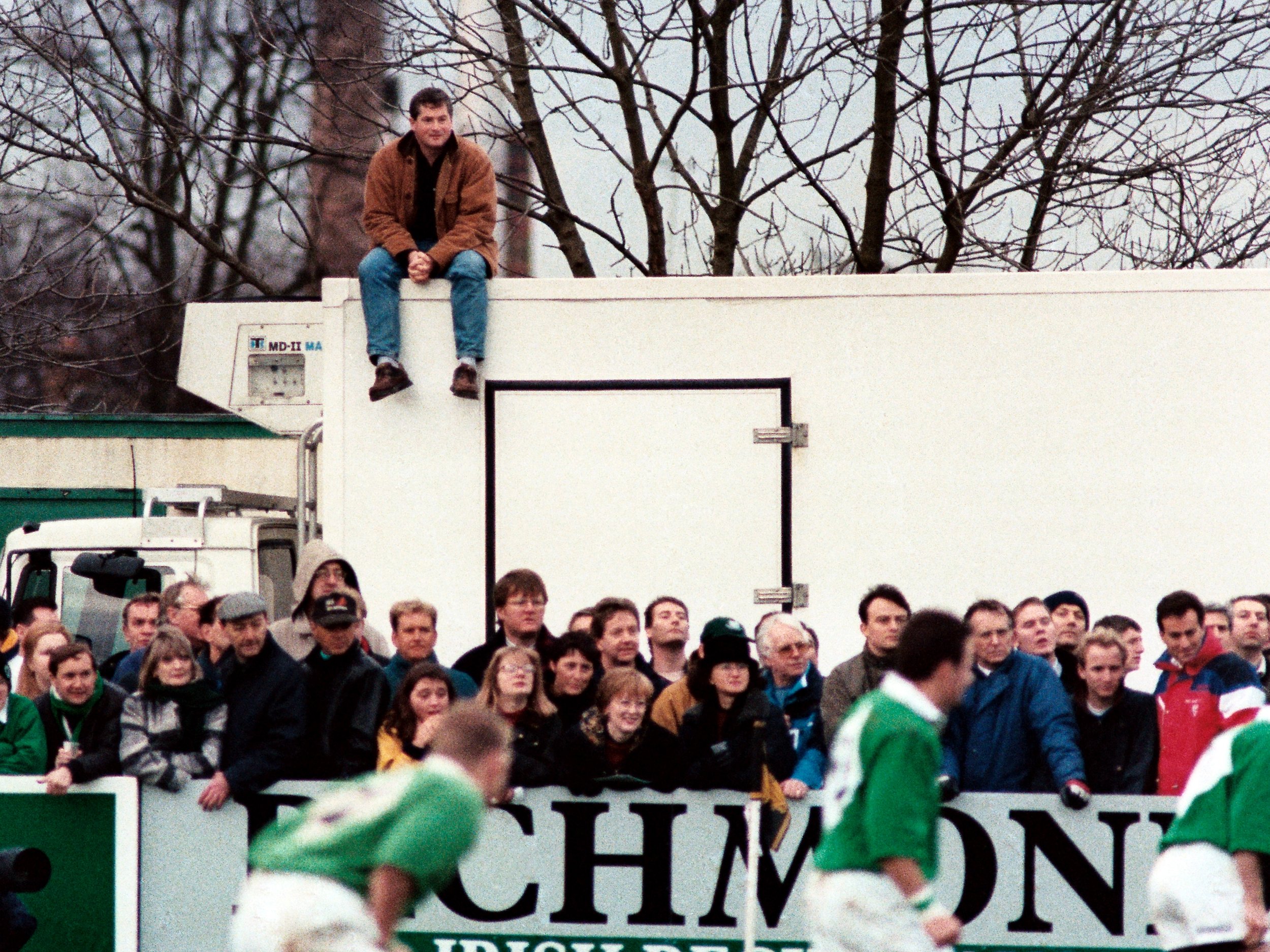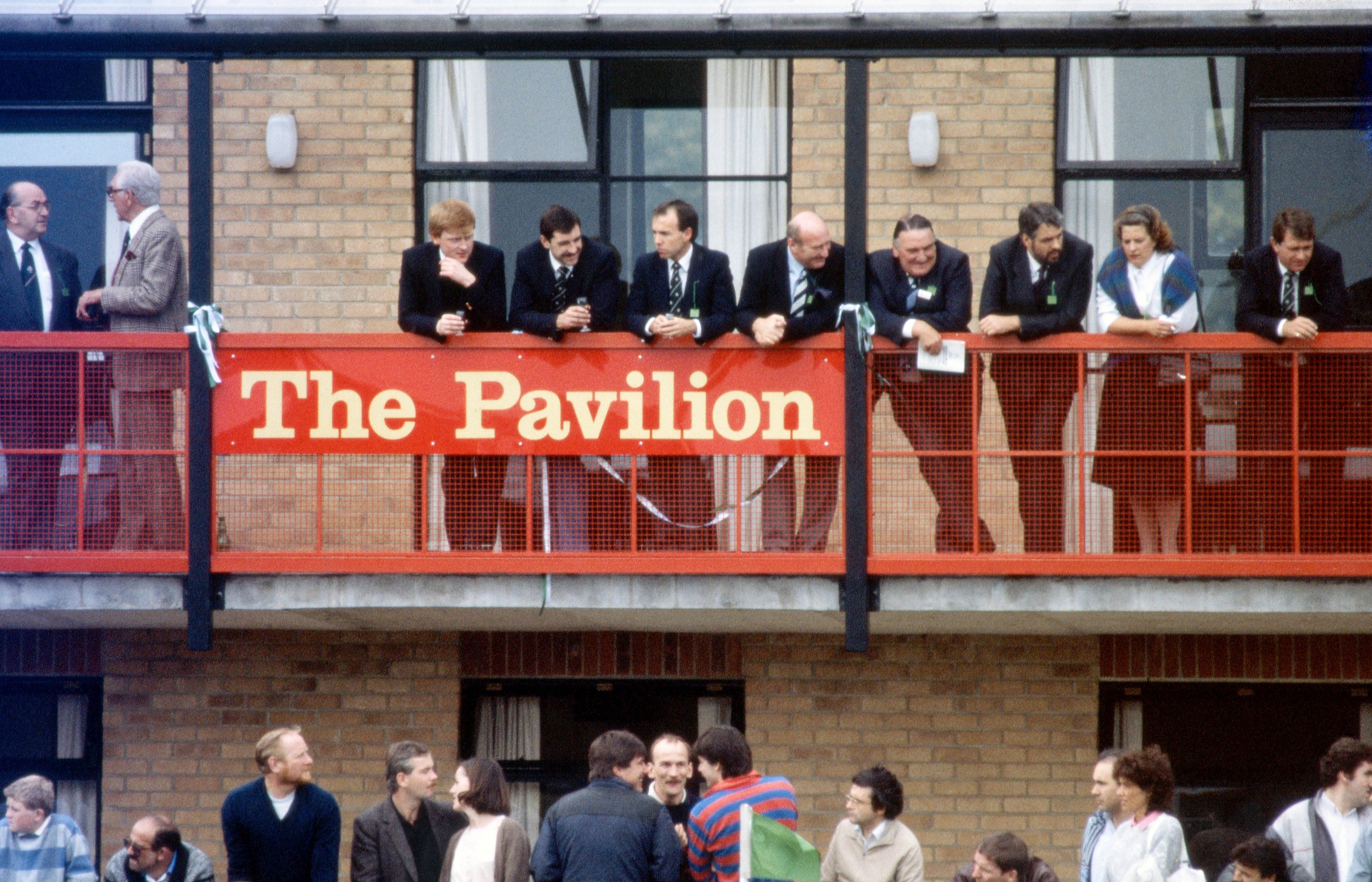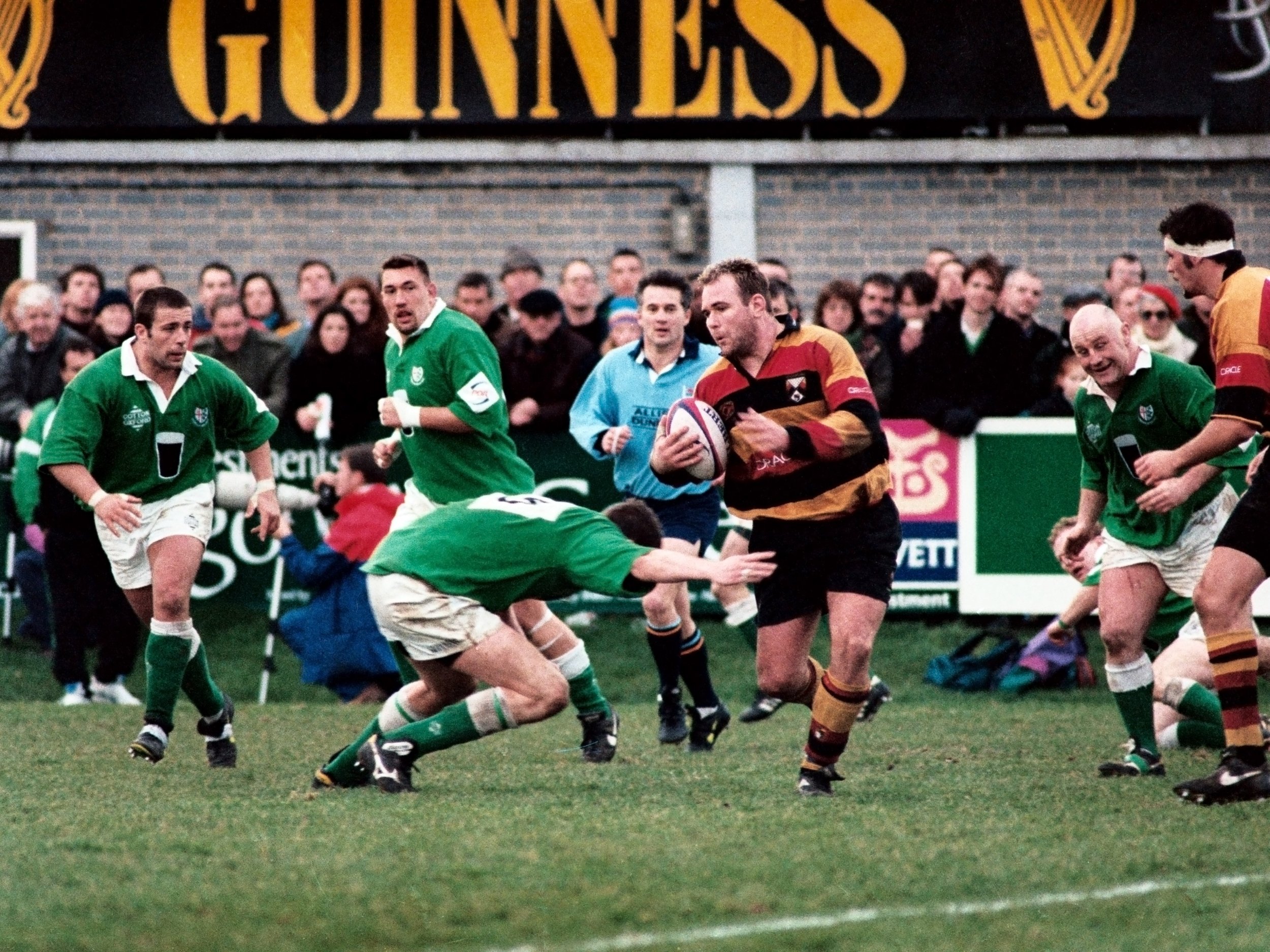
Rugby Lives Craig Doyle
The Avenue
Six Nations Storytellers
Malakai Fekitoa
Northampton Saints
I played rugby all my life, very badly. I was skinny, eight stone something when I was wet. But I really loved it. The hero of my day was Tony Ward, he was a phenomenal rugby player – I’m actually playing golf with him on Friday.
I was at Blackrock from the age of six, until I was eighteen. The guys I met at six years old are still my friends today. Niall Woods, Shane Byrne, Victor Costello. It was a good rugby year. There were also a lot of very successful businessmen and politicians… And Father Dougal from Father Ted, he was a couple years ahead of me.
I used to do the fish and chip run for a priest called Father Devine. I was in my final year of boarding school. He used to think I was a really good kid, very helpful. But what he didn’t know was that while I was getting him his fish and chips, I was meeting up with a girl. Myself and a mate used to run to the village, meet these two girls, get a couple pints, pick up the fish and chips and drop them back to him. He’d always be asleep, so we knew we could stay out for a few hours. After months of doing this, he called me into his office and said, ‘we’ve had a chat, myself and the priests and we feel you might have been called to the priesthood’. I said, ‘hmm, no, I don’t think so’. I avoided priests for the rest of my life.
When I was a kid, I would go along to Leinster games. It wasn’t like it is now. Even Brian O’Driscoll will tell you when he started playing, there were 2000 people in Donnybrook, not the full Aviva Stadium you get these days.
Brian has been a good friend for a few years now, but he doesn’t look younger than me, let’s be honest. There are quite a few years between us. I may have beaten him up at school, he would have been a lot younger. Now we have our production company together, we speak most days. He’s a good lad.
I love golf. I’ve played since I was little, but I can’t putt for toffee. I can hit the ball miles, but I cannot putt. The lads love it. There is a beautiful course we played recently in Dunleary. I drove to the par fours and still bogied both of them, that’s how bad my putting is. It’s a disaster. The lads think it’s the funniest thing. I’m determined to get to single figure this summer.
The last time I played, myself and Niall Woods went up against Brian and Rob Kearney. We beat them on the 18th, and it was beautiful. They had to buy lunch, which they didn’t like. They don’t like losing at all.
I wanted to be in the army, then I wanted to be a vet, then I decided I wanted to be a sports broadcaster. At fourteen, I told my careers person I wanted to present Grandstand on BBC One and they laughed at me. They said I was being ridiculous. So, when I finally did present it years later, I did so with a big grin on my face. Never tell me I can’t do something.
I did about a year on a kids show called Disney Club. The money was four times what I was earning before, and it was a fifth of the days. It was weird, but I always say to people you just need to get in somewhere. It doesn’t matter what it is you’re doing – once you’re in the room, other things will come of it if you work hard. So, while I was doing that, I met the director of Tomorrow’s World, which was a science technology show on BBC One. I worked on that for three years. I used to do bits of rugby when I could, and they all knew I loved sport. So, Grandstand came and approached me, and the sports side of things grew from there.
One of the first things I did with the BBC was the British Superbike Championship. That is so tough, it’s brutal. I loved it. Then the TT came off the back of that. The death was hard to take. There would be two to three deaths a year. The more you do it, the more you get to know people, and then the people you know start dying. So, it got to the stage where I’d had enough of seeing it. I know the danger is an integral part of it, but it was hard to take.
I ride a very small motorbike, a 1969 Vesper 150 Baloche. I have done the TT course in a car but couldn’t ever do it on a bike, it scares me too much.
Working for BT has been huge, it’s the first time I’ve been the main anchor. Before, I was always behind people – Steve Ryder, John Inverdale or Sue Barker. So, to be main anchor was a cool moment. I was there from day one, hosting the opening of the channel. You don’t get to do that in your lifetime very often, launch a channel.
The coverage grew organically, there was no masterplan. I’ve known Lawrence Dallaglio for twenty years, Bayfes (Martin Bayfield) fifteen years, Austen, Nick Mullins, the whole team have known each other for years. The friendship thing is important. It helps – we’re like a weird dysfunctional family.
A landmark moment in my career was interviewing Tiger Woods. I did the interview, and someone said to me ‘that’s the best interview I’ve ever heard with Tiger’. He was amazing. A lovely, interesting, impressive, engaging person – I really liked him.
TV has given me some great opportunities. I played a soccer match in front of a full Old Trafford. 74,000 people there and millions watching back home. Playing with the likes of Maradonna, Gianfranco Zola, Dunga and Schmeichel. It was surreal. It was an England Versus Rest of The World match. In the dressing room before the game, Alistair Campbell took out a set of bagpipes and you had Maradona and Zola on the physio table doing the highland fling.
I noticed how tired you get, being out there in front of thousands of people. Maradona was there, flicking it around doing keepie-ups, then they pass it to me, and I couldn’t even move my legs. I was responsible for both the goals we let in, but it was a heck of an experience. I took a moment to look around the stands, and it was just unbelievable. I also noticed how you block out the crowd. Sometimes, when you’re on the ball or tracking someone, it’s like there’s no one else in the stadium. Then in the quiet moments, you can hear a guy in row Z calling your name.
I raced for Ireland in the Triathlon World Championships in Hamburg. I was covering the sport and I didn’t know much about it, so I decided to join a club. It was the best way to learn. I run like a duck, I’m not very athletic but the club were going to the World Championships and everyone at the BBC said, ‘I bet you won’t make the team’. To do so, you have to be in the top 10% in your age group in the country over five races, so I just started racing properly that year. I made the Irish team. I think I finished 90th, I was shite. But it was a great experience.
There have been some strange moments when I’ve been on air. One year, I was interviewing Thomas Castagnède from the changing rooms and a couple of the players had dropped their towels. It was the final day of the Six Nations, Wales versus France. I look over his shoulder, and they’re just stood there with their nobs hanging out. Probably six to eight million people watching it live, and I’m just looking at these guys’ penises. I said, ‘I’m very sorry to those watching at home, probably some French cockerel you didn’t expect to see on a Saturday afternoon – back to you, John.’
By Tyrone Bulger
Pictures from Getty Images and fromthebackofamotorbike.co.uk/
The Avenue, Sunbury-On-Thames, London Irish, 1931-1999
On the southern banks of the Thames, between the famous tracks at Kempton Park Racecourse and Charles I’s old hunting ground, were once the grounds of The Avenue at Sunbury, the spiritual home of London Irish.
At its peak, the ground could hold anywhere up to 6,600 supporters. Championed for serving a Guinness as good as any bar in Dublin, The Avenue was graced by the presence of Irish legends throughout the decades. The likes of Brendan Mullin, Michael Gibson, and John O’Driscoll have all supped a pint or two as traditional Irish musicians would have added to the jovial post-match atmosphere on victory days.
The club was first founded in 1898, following in the footsteps of the other two home nation’s exile teams. They played their first match against Hammersmith at the Herne Hill Athletic Ground. They won eight points to three, led by the likes of R S Dyas and Louis Magee, two men who would go on to have a huge impact on Irish’s early progress.
Under his leadership, they started to build a reputation as formidable opponents. Their fixture list soon included the leading London club’s of that era – with games against the likes of Rosslyn Park, Blackheath, Saracens, and Wasps towards the beginning of the 1900s. A decade on from their founding year, the side completed a season in which they played twenty-eight games, winning fifteen of them.
Like all European clubs, Irish were badly affected by the two World Wars, but they also had the added impact of the Irish Easter Rising in 1916. The end of the Great War did not mean a return to peace for Ireland. It was in 1923 that the Irish Free State was established, and the exiles were able to welcome players back to the club.
During the late 1920s, the club boasted their first homegrown international in S J ‘Cags’ Cagney, a forward who went on the play for his country thirteen times. With Cags as captain, Irish added the likes of Leicester and Cardiff to their fixture list and went on to topple both the other two exile clubs in the season of 1928/29.
As the 1930s began, the club were becoming one of the premier forces in the country, not just the capital. The growing fixture list brought with it the need for a more permanent home. In 1931, the twelve-acre plot at Avenue Road, Sunbury on Thames, was purchased for the grand total of £1,280. After five months of development, the ground was finally ready for its first fixture. On the 5th of December, the team played out an 8-8 draw against London Welsh.
The club thrived at Sunbury for the next ten years, but the beginning of the Second World War saw the land requisitioned by the Ministry of Agriculture. The posts were dug up and instead fruit and vegetables were planted to feed the population of the city.
After the war ended, the grounds at The Avenue were left in a sorry state. Irish persevered in their efforts to make use of them, but in the 1946/47 season, Europe suffered one of its most brutal winters and a lengthy freeze meant that no more than twenty fixtures were played by the club.
The following year, Des O’Brien, one of the best backrowers of his generation, became the club captain. Under his leadership, Irish went on to win nineteen of thirty games, the most successful season in the clubs’ history and a great way to celebrate their fiftieth anniversary.
The combination of the war and the return to fixtures meant that The Avenue was dilapidated. This spurred the club’s decision to have the 1st XV matches played elsewhere, (this was only for first team matches) combining with Blackheath to share the facilities at Rectory Field. During this period, the club regularly fielded six teams, five of which still played at Sunbury, and cemented themselves as one of the thriving rugby hubs in London.
At the end of the ‘50s, the club were somewhat split, with their schoolboys’ section using the steadily improving grounds at The Avenue while the first team continued to play at Rectory Road. They decided that it was in their best interests to transform The Avenue into a first-class facility. The pitches were dug up and re-laid, and a stand and clubhouse were constructed in 1959.
With the new developments, the old wooden hut that had served as the original changing rooms was transformed into a bar, run by a man known as Fitzy. Fitzy’s bar earned itself a legendary status amongst the London Irish faithful, and its legacy lives on to this day.
The Avenue was a fortress for Irish in their first year back. The side almost made it through the entire season without losing at home. However, they fell at the final hurdle, when they agreed to play a previously abandoned game against Northampton, which they lost ten points to five.
Throughout the sixties, the club struggled for any amount of consistency. There were big wins against top clubs such as Coventry, but there were also many losses. But as the decade passed, the side began to build themselves up once more. With the famous hooker, Ken Kennedy, at the helm and players such as Mick Molloy amongst their ranks, they finished second in the London Division of the club merit tables in their inaugural season.
In 1980, London Irish found double success, making it to the final of the John Player Cup for the first time, as well as finishing top of their league. Throughout the 90s however, they struggled for form once more as many of the players were unavailable for training and matches due to work commitments. A new pavilion was built next to the main stand in 1986, thanks to the generosity of Eddie Lawlor.
Like all the clubs in the country, as the game transitioned to professionalism London Irish struggled to adapt. Financial issues meant that despite their promotion to the first division of the John Smith Merit Tables in 1991, the club were unable to get much of a foothold in the league. It was through the generosity of key benefactors at the time that the club were able to survive.
At the beginning of the 1995-96 season, there was a lot of uncertainty surrounding the future of both club and international rugby. The issue of professionalism was at the forefront of the conversation, and it was evident there were changes in the pipeline. The RFU made the decision that the top two tiers of the national leagues should expand and become more competitive. This committed the clubs involved to becoming professional, a challenge that London Irish were willing to accept.
On the 27th of June 1997, members of the club voted to accept an offer from several London Irish businesspeople to buy the club. London Irish Holdings Ltd. (LIH) took over the debts of the old club, ownership of the franchise as well as the ground at Sunbury-on-Thames. This decision would have a ripple effect for the club and in November that year, the first proposal to organise an amateur section of the club was rejected, but eventually the motion was passed, and London Irish Amateur RFC was born.
On the 1st May 1999, London Irish (first team) narrowly lost to Saracens, 21-26 in their final game at The Avenue. They relocated to the Twickenham Stoop, before moving to the Madejski Stadium in 2000. The amateur division of the club continued to occupy the ground at Sunbury, until they eventually moved to a brand-new rugby centre in Hazelwood alongside the professional setup.
Plans to demolish the clubhouse and facilities at The Avenue and build 400 homes were announced in 2009 but met with extensive protests from local residents and supporters. This battle lasted for all of two years, until finally the plans were accepted and a downsized number of 194 houses were built on the land.
Although London Irish have moved on and nothing remains of the former ground, it will remain the place that they built themselves into one of the premier teams in the country, and the many great memories are sure to live on.
By Tyrone Bulger



